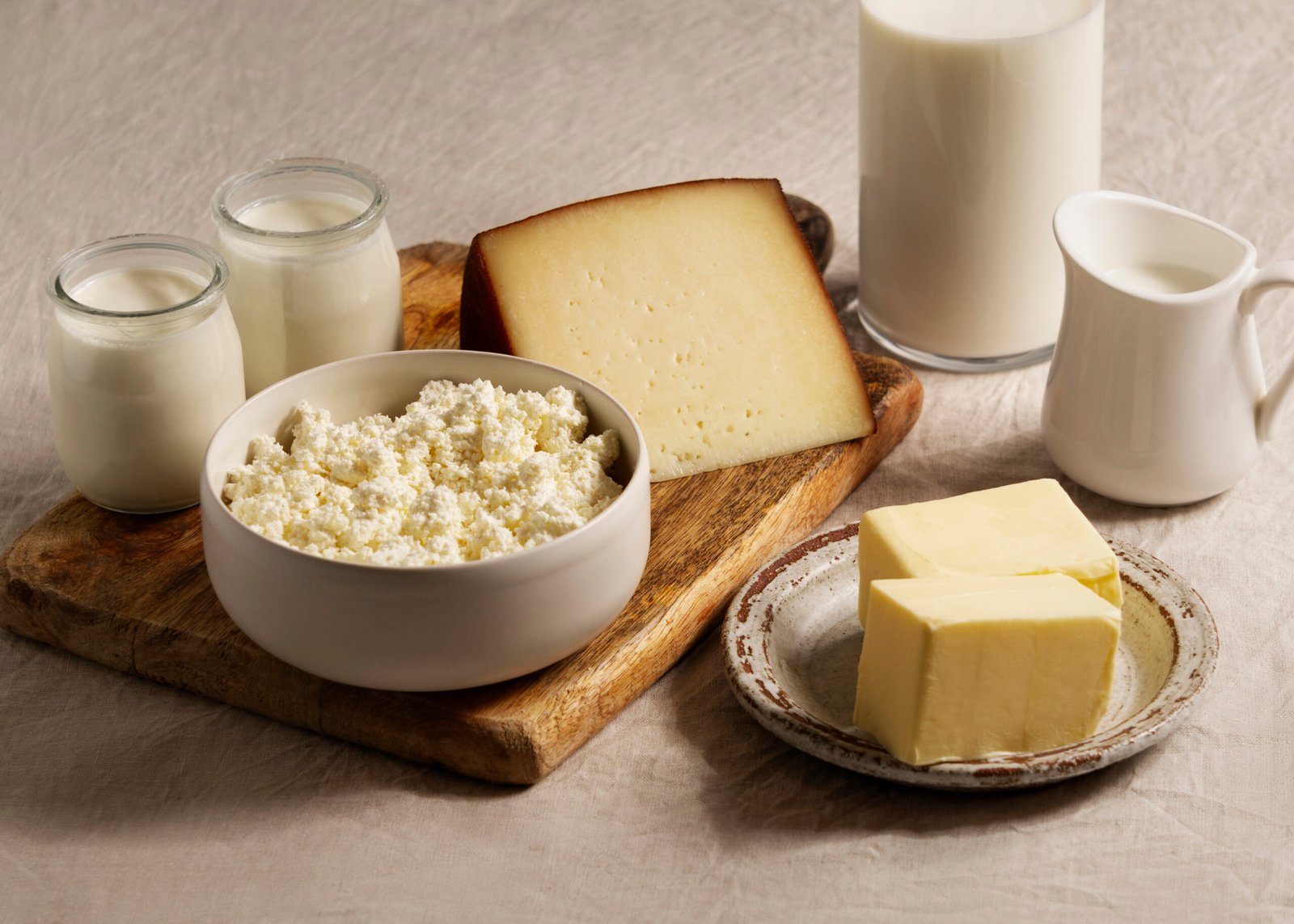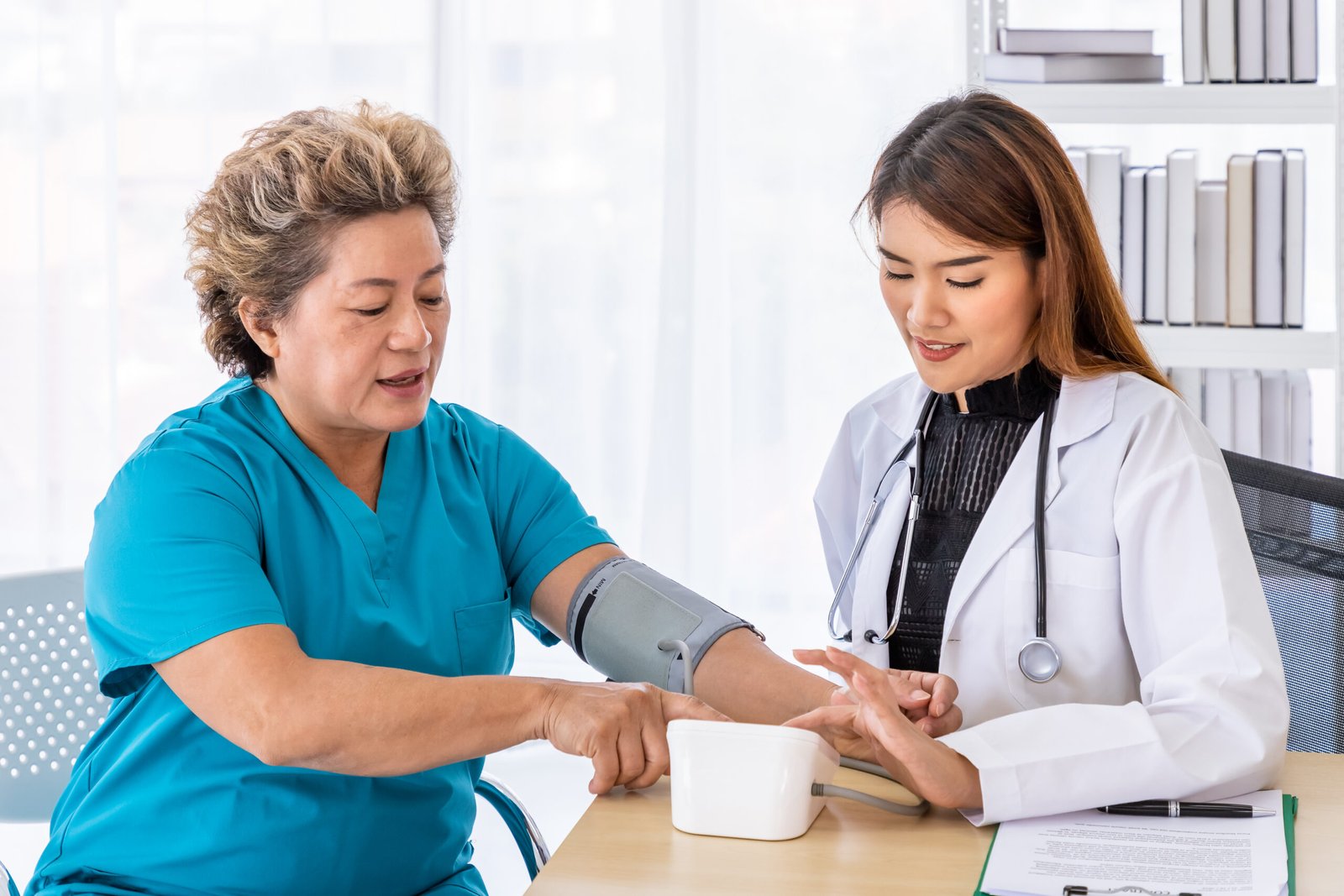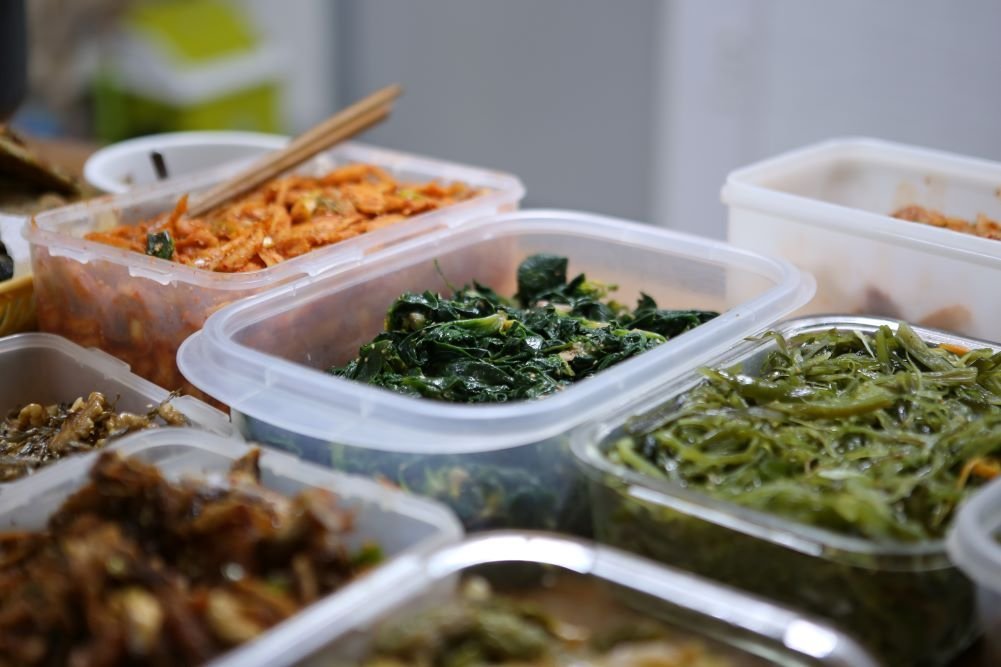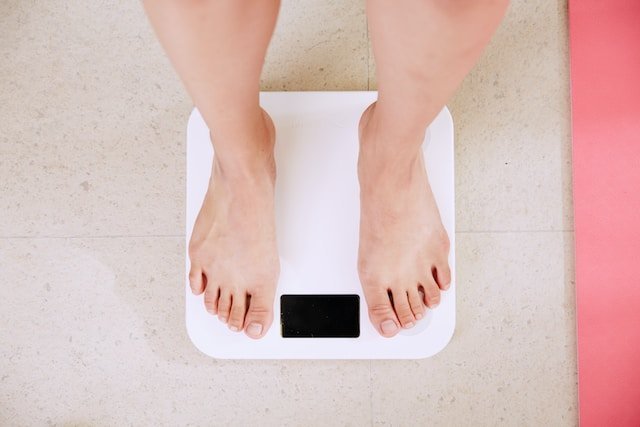
In recent years, dairy has become a source of confusion—and sometimes even fear. Some women cut it out because of lactose intolerance, a vegan lifestyle, or the belief that milk isn’t necessary. Personally, I recommend aiming for at least a cup of milk or yogurt daily if feasible—but I understand it can be hard to make this consistent.
For women navigating menopause, the stakes are higher. After menopause, oestrogen levels drop sharply, accelerating bone loss and increasing the risk of osteoporosis and fractures. That’s why calcium—and other bone-supporting nutrients like vitamin D3, magnesium, protein, and vitamin K2—become essential.
Let’s explore what dairy provides, how to maintain nutrient intake if you go dairy-free, and practical ways to support bone health during midlife and beyond.
What’s in Milk and Milk Products?
Dairy is an excellent source of three key nutrients for midlife women: protein, calcium, and vitamin B12 (1):
| Milk and Milk Products – 1 Serving | Protein (g) | Calcium (mg) | Vitamin B12 (mcg) |
| Milk – Low fat – 1 cup (240ml) | 8.3 | 280 – 307 | 1.49 |
| Yogurt – Low fat plain – 1 cup (245g) | 12.9 | 448 | 1.37 |
| Cheddar cheese – 1 slice (21g) | 4.9 | 148 | 0.22 |
Protein: Supporting Bones and Muscles
Protein helps build and preserve lean muscle mass, which naturally declines with age (sarcopenia). Maintaining muscle is critical for balance, mobility, and fracture prevention. Protein also strengthens bone structure.
Women over 50 should aim for 1.0–1.2 g protein per kg of body weight per day—roughly 50–65 g daily depending on size and activity (2,3). Dairy makes this easier, but if you cut back, include protein-rich foods such as eggs, poultry, fish, beans, lentils, nuts, seeds, tofu, and fortified plant-based milks.
Calcium: How Much Do You Need?
Calcium needs rise after menopause to counter bone loss. Recommendations vary:
- UK: 700 mg/day (up to 1000 mg if on osteoporosis medications) (4)
- US: 1000 mg/day for women 19–50; 1200 mg/day for women 51+ (5)
- Singapore: 800 mg/day for adults 19–50; 1000 mg/day for 51+ (6)
Milk and dairy make reaching these goals much easier. A cup of milk or yogurt plus a slice of cheese can cover a significant portion. Other calcium sources include leafy greens, nuts, seeds, and fortified plant-based milks.
If you choose plant-based or dairy-free alternatives, focus on:
| Food | Calcium (mg) | Portion Size |
| Fortified soy milk | 240 | 200ml glass |
| Fortified almond milk | 240 | 200ml glass |
| Kale, boiled | 120 | 4 heaped Tbsp (80g) |
| Spinach, cooked, drained | 123 | ½ cup |
| Hard tofu (calcium-set)* | 347 | 225g (1 large block) |
| Chinese tofu (calcium-set)* | 72 | 100g (1/3 large block) |
| Japanese silken tofu (calcium-set)* | 107 | 100g (1/3 large block) |
| Canned sardines with bones | 340 | Half can (50g) |
| Almonds | 53 | 10 nuts (22g) |
| Sesame seeds | 80 | 1 Tbsp (12g) |
| Whole wheat bread | 134 | 2 slices (72g) |
| Dried figs | 92 | 2 dried (40g) |
*Source:Packages of popular brands available in Singapore.
Note: If you opt for plant-based alternatives like soy milk or tofu, always check calcium levels on the label. Not all products are fortified, and when they are, calcium content can vary by brand.
Calcium Alone Isn’t Enough
Calcium works best in combination with vitamin D3, vitamin K2, and magnesium for strong, healthy bones:
- Vitamin D3 enhances calcium absorption. Your body makes it from sunlight, but levels can drop with age or limited sun exposure. You can boost it through fatty fish, eggs, fortified foods, or supplements.
- Vitamin K2, found in fermented foods like natto, aged cheeses, or supplements, helps direct calcium into bones and keeps it out of arteries.
- Magnesium, found in nuts, seeds, whole grains, legumes, and leafy greens, supports bone structure and activates vitamin D3.
Vitamin B12: Essential for Nerves and Bones
Vitamin B12 helps form red blood cells, maintain nerve function, support energy metabolism, and regulate homocysteine levels—high homocysteine is linked to increased fracture risk (7). Dairy contributes to your B12 intake, so if you avoid animal products completely, a supplement is strongly recommended. Eggs, fish, poultry, meat, and fortified plant-based milks are other good options.
Should You Take Calcium Supplements?
Whole foods are the safest and most effective way to meet calcium needs. But depending on your diet, adding a 300–500 mg calcium supplement can help. Also, Calcium alone isn’t enough. For best results, choose calcium supplements with vitamins D3 and K2, and magnesium to support calcium absorption and bone uptake.
Final Thought
Cutting back on dairy or giving it up entirely is a personal choice, sometimes driven by intolerance or lifestyle. But for women, especially during and after menopause when bone loss accelerates, this decision comes with extra responsibility.
The good news? There are effective ways to get the calcium, protein, and other bone-supporting nutrients your body needs without dairy. It just takes conscious planning:
- Check labels carefully
- Include fortified plant-based milks
- Eat a variety of leafy greens, nuts, seeds, and tofu
- Supplement strategically where needed
Skipping dairy can work—but protecting your bones without it means being intentional every step of the way.
Disclaimer Notice: The information provided on this website, www.veveva-nutrition.com, is for general informational purposes only and is not intended as medical advice, diagnosis, or treatment. It should not replace consultation with a qualified healthcare professional. VeVeva Nutrition Pte Ltd (“VeVeva”), its directors, employees, affiliates, and partners make no representations or warranties regarding the accuracy, completeness, or reliability of the information provided. If you have any health concerns, are taking long-term medication, or are under medical supervision, please consult a doctor or qualified healthcare professional before making any changes to your diet, lifestyle, or treatment. Never disregard professional medical advice or delay seeking it because of something you have read on this website.
References
- USDA Food Data Central, 2019. https://fdc.nal.usda.gov
- Bauer J. et al., “Evidence-Based Recommendations for Optimal Dietary Protein Intake in Older People: PROT-AGE Study Group,” J Am Med Dir Assoc. 2013; 14(8): 542-559. https://pubmed.ncbi.nlm.nih.gov/23867520/
- European Society for Clinical Nutrition and Metabolism (ESPEN) Guidelines on Nutrition for Older Adults, 2022. https://doi.org/10.1016/j.clnu.2022.01.024
- British Nutrition Foundation, “Calcium Counts! Dairy & Non-Dairy Sources of Calcium,” 2019. https://www.bda.uk.com/resource/calcium.html
- Ross C. et al., “The 2011 Report on Dietary Reference Intakes for Calcium and Vitamin D,” J Clin Endocrinol Metab, 2011; 96(1): 53-58. https://pubmed.ncbi.nlm.nih.gov/21118827/
- HealthHub Singapore, Recommended Dietary Allowances for Normal Healthy Persons, https://www.healthhub.sg/live-healthy/recommended_dietary_allowances
- McLean R. et al., “Plasma Homocysteine Concentrations and Risk of Hip Fracture in Older Adults,” N Engl J Med, 2004; 350(20): 2042-2049. https://pubmed.ncbi.nlm.nih.gov/15141042/




